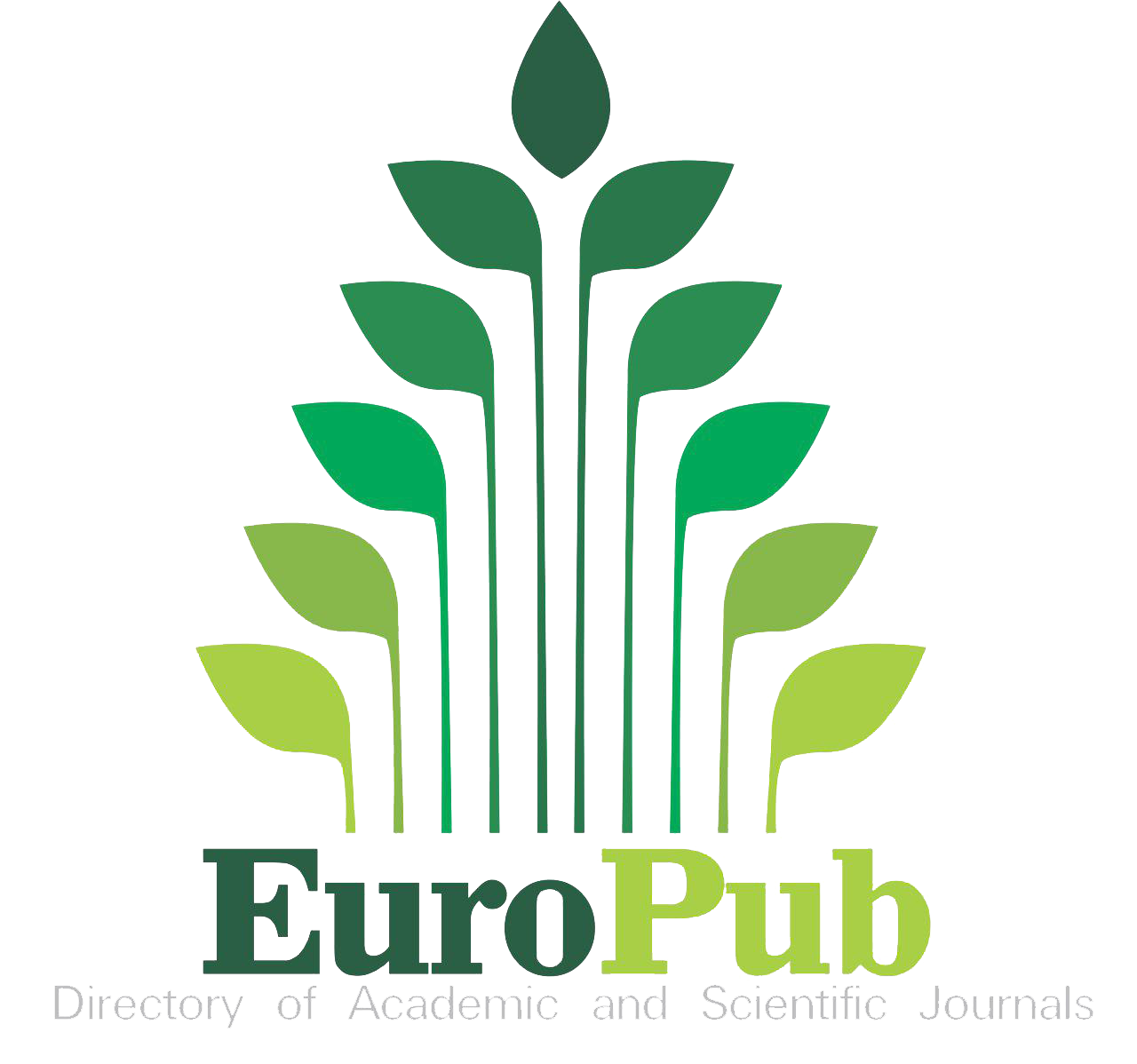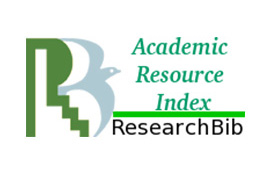Mycoplasma spp., Clostridium Piliforme, Streptobacillus Moniliformis, Streptococcus Pneumoniae, Pasteurellaceae spp., Helicobacter spp. infections in Rats
Common bacterial infections in rats
DOI:
https://doi.org/10.5281/zenodo.12601099Abstract
The mouse microbiome, defined as all bacterial species found in or on the mouse, and their interactions among themselves and with their environment, are always present. Non-infective agents or pathogenicity of infective agents can lead to various diseases. The flora of mice in the mevuct will become more complex depending on their housing and rearing conditions, meaning that more bacterial species will colonize mice. The same strain may have different flora in different experimental animal breeders. Opportunistic pathogen is often referred to as ‘‘opportunistic’’ agent or even simply ‘‘opportunistic’’but it is a definition that blends both commensal flora and primary pathogens. Rats, the most commonly used species of experimental animals, are susceptible to a range of bacterial infections that can be enzootic or sporadic but can have high morbidity and motility rates leading to severe disease. When formulating differential diagnoses for sick or diseased animals, it must be recognized that diseases that were once common in animals imported in the 1960s and 1970s are now rare. It is also important to recognize that housing and sanitation conditions can affect exposure to potentially pathogenic bacteria. Animals raised in areas where biosecurity measures are emphasized may be exposed to many more potential pathogens than animals raised in mixed or free-range environments. Much of the available literature describing the clinical and epizoological features of bacterial infections of this type is dated and scientists should be encouraged to study the prevalence in rats and publish their results in more detail.
References
Masoumalinejad Z, Zinatizadeh MR, Tahmasebiabdar N. A Review of Mycoplasma in Laboratory Mice. Modern Medical Laboratory Journal. 2019;2(2):127-131. doi:10.30699/mmlj17.2.1.15
Brenner DJ, Krieg NR, Staley JR. Bergey’s Manual® of Systematic Bacteriology: Volume 2: The Proteobacteria, Part B: The Gammaproteobacteria. Springer Science & Business Media; 2007.
van Kuppeveld FJ, van der Logt JT, Angulo AF, et al. Genus- and species-specific identification of mycoplasmas by 16S rRNA amplification. Appl Environ Microbiol. 1992;58(8):2606-2615. doi:10.1128/aem.58.8.2606-2615.1992
Sanchez S, Tyler K, Rozengurt N, Lida J. Comparison of a PCR-based diagnostic assay for Mycoplasma pulmonis with traditional detection techniques. Lab Anim. 1994;28(3):249-256. doi:10.1258/002367794780681570
Booth JL, Umstead TM, Hu S, et al. Housing conditions modulate the severity of Mycoplasma pulmonis infection in mice deficient in class A scavenger receptor. Comp Med. 2014;64(6):424-439.
Bhatt P. Viral and Mycoplasmal of Laboratory Rodents: Effects on Biomedical Research. Elsevier; 2012.
HILL AC. Mycoplasma collis, a New Species Isolated from Rats and Mice. International Journal of Systematic and Evolutionary Microbiology. 1983;33(4):847-851. doi:10.1099/00207713-33-4-847
Johansson KE, Pettersson B. Taxonomy of Mollicutes. In: Razin S, Herrmann R, eds. Molecular Biology and Pathogenicity of Mycoplasmas. Springer US; 2002:1-29. doi:10.1007/0-306-47606-1_1
McGARRITY GJ, ROSE DL, KWIATKOWSKI V, DION AS, PHILLIPS DM, TULLY JG. Mycoplasma muris, a New Species from Laboratory Mice. International Journal of Systematic and Evolutionary Microbiology. 1983;33(2):350-355. doi:10.1099/00207713-33-2-350
van Kuppeveld FJ, van der Logt JT, Angulo AF, et al. Genus- and species-specific identification of mycoplasmas by 16S rRNA amplification. Appl Environ Microbiol. 1993;59(2):655. doi:10.1128/aem.59.2.655-.1993
Zinatizadeh MR, Abedini F, Jafarpour M, Masoumalinejad Z. Identification of Mycoplasma Muris Isolated from Vaginal Samples of NIH Mice. Modern Medical Laboratory Journal. 2019;2(1):100-106. doi:10.30699/mmlj17.1.3.100
Constantopoulos G, McGarrity GJ. Activities of oxidative enzymes in mycoplasmas. J Bacteriol. 1987;169(5):2012-2016. doi:10.1128/jb.169.5.2012-2016.1987
Barden JA, Tully JG. Experimental arthritis in mice with Mycoplasma pulmonis. J Bacteriol. 1969;100(1):5-10. doi:10.1128/jb.100.1.5-10.1969
Sirois M. Laboratory Animal and Exotic Pet Medicine: Principles and Procedures. Elsevier; 2022.
Suckow MA, Hankenson FC, Wilson RP, Foley PL. The Laboratory Rat. Academic Press; 2019.
Franklin CL, Motzel SL, Besch-Williford CL, Hook RR, Riley LK. Tyzzer’s infection: host specificity of Clostridium piliforme isolates. Lab Anim Sci. 1994;44(6):568-572.
Mansfield KG, Fox JG. Bacterial Diseases. The Common Marmoset in Captivity and Biomedical Research. Published online 2019:265-287. doi:10.1016/B978-0-12-811829-0.00016-9
Pritchett-Corning KR, Cosentino J, Clifford CB. Contemporary prevalence of infectious agents in laboratory mice and rats. Lab Anim. 2009;43(2):165-173. doi:10.1258/la.2008.008009
Livingston RS, Riley LK. Diagnostic Testing of Mouse and Rat Colonies for Infectious Agents. Lab Anim (NY). 2003;32(5):44-51. doi:10.1038/laban0503-44
Hansen AK, Andersen HV, Svendsen O. Studies on the diagnosis of Tyzzer’s disease in laboratory rat colonies with antibodies against Bacillus piliformis (Clostridium piliforme). Lab Anim Sci. 1994;44(5):424-429.
Hedrich HJ, Bullock GR. The Laboratory Mouse. Elsevier Academic Press; 2004.
Van Andel RA, Hook RR, Franklin CL, Besch-Williford CL, Riley LK. Interleukin-12 Has a Role in Mediating Resistance of Murine Strains to Tyzzer’s Disease. Infect Immun. 1998;66(10):4942-4946.
VAN Andel RA, Franklin CL, Besch-Williford CL, Hook RR, Riley LK. Prolonged perturbations of tumour necrosis factor-alpha and interferon-gamma in mice inoculated with Clostridium piliforme. J Med Microbiol. 2000;49(6):557-563. doi:10.1099/0022-1317-49-6-557
Fraise A. Currently available sporicides for use in healthcare, and their limitations. J Hosp Infect. 2011;77(3):210-212. doi:10.1016/j.jhin.2010.06.029
Perez J, Springthorpe VS, Sattar SA. Activity of selected oxidizing microbicides against the spores of Clostridium difficile: relevance to environmental control. Am J Infect Control. 2005;33(6):320-325. doi:10.1016/j.ajic.2005.04.240
Eisenberg T, Nicklas W, Mauder N, et al. Phenotypic and Genotypic Characteristics of Members of the Genus Streptobacillus. PLoS One. 2015;10(8):e0134312. doi:10.1371/journal.pone.0134312
Waelsch L. Dermatologische Wochenschrift. Arch f Dermat. 1912;115(2):183-186. doi:10.1007/BF01838920
Easterbrook JD, Kaplan JB, Glass GE, Watson J, Klein SL. A survey of rodent-borne pathogens carried by wild-caught Norway rats: a potential threat to laboratory rodent colonies. Lab Anim. 2008;42(1):92-98. doi:10.1258/la.2007.06015e
Glastonbury JR, Morton JG, Matthews LM. Streptobacillus moniliformis infection in Swiss white mice. J Vet Diagn Invest. 1996;8(2):202-209. doi:10.1177/104063879600800210
Taylor JD, Stephens CP, Duncan RG, Singleton GR. Polyarthritis in wild mice (Mus musculus) caused by Streptobacillus moniliformis. Aust Vet J. 1994;71(5):143-145. doi:10.1111/j.1751-0813.1994.tb03368.x
Gaastra W, Boot R, Ho HTK, Lipman LJA. Rat bite fever. Vet Microbiol. 2009;133(3):211-228. doi:10.1016/j.vetmic.2008.09.079
Boot R, Oosterhuis A, Thuis HCW. PCR for the detection of Streptobacillus moniliformis. Lab Anim. 2002;36(2):200-208. doi:10.1258/0023677021912352
Kimura M, Tanikawa T, Suzuki M, et al. Detection of Streptobacillus spp. in feral rats by specific polymerase chain reaction. Microbiol Immunol. 2008;52(1):9-15. doi:10.1111/j.1348-0421.2008.00005.x
Cremers AJ, Zomer AL, Gritzfeld JF, et al. The adult nasopharyngeal microbiome as a determinant of pneumococcal acquisition. Microbiome. 2014;2(1):44. doi:10.1186/2049-2618-2-44
Lemon KP, Klepac-Ceraj V, Schiffer HK, Brodie EL, Lynch SV, Kolter R. Comparative Analyses of the Bacterial Microbiota of the Human Nostril and Oropharynx. mBio. 2010;1(3):10.1128/mbio.00129-10. doi:10.1128/mbio.00129-10
Mitruka BM. Biochemical aspects of Diplococcus pneumoniae infections in laboratory rats. Yale J Biol Med. 1971;44(3):253-264.
Kontiokari T, Renko M, Kaijalainen T, Kuisma L, Leinonen M. Comparison of nasal swab culture, quantitative culture of nasal mucosal tissue and PCR in detecting Streptococcus pneumoniae carriage in rats. APMIS. 2000;108(11):734-738. doi:10.1034/j.1600-0463.2000.d01-22.x
Gades NM, Mandrell TD, Rogers WP. Diarrhea in Neonatal Rats. Contemp Top Lab Anim Sci. 1999;38(6):44-46.
Teixeira LM, Carvalho MG, Espinola MM, et al. Enterococcus porcinus sp. nov. and Enterococcus ratti sp. nov., associated with enteric disorders in animals. International Journal of Systematic and Evolutionary Microbiology. 2001;51(5):1737-1743. doi:10.1099/00207713-51-5-1737
Hansen AK, Nielsen DS. Handbook of Laboratory Animal Bacteriology, Second Edition. CRC Press; 2014.
Kucukoflaz M, Ozbek V, Sariözkan S, Kocaoğlu Güçlü B, Kara K. Growth Performance, Ruminal Volatile Fatty Acids, Health Status and Profitability in Calves Fed with Milk Supplemented with Probiotics. Kafkas Unıversıtesı Veterıner Fakultesı Dergısı. 2022;28. doi:10.9775/kvfd.2022.27203
Hoover D, Bendele SA, Wightman SR, Thompson CZ, Hoyt JA. Streptococcal enteropathy in infant rats. Lab Anim Sci. 1985;35(6):635-641.
Forbes BA, Sahm DF, Weissfeld AS. Bailey & Scott’s Diagnostic Microbiology. Elsevier Mosby; 2007.
Adhikary S, Nicklas W, Bisgaard M, et al. Rodentibacter gen. nov. including Rodentibacter pneumotropicus comb. nov., Rodentibacter heylii sp. nov., Rodentibacter myodis sp. nov., Rodentibacter ratti sp. nov., Rodentibacter heidelbergensis sp. nov., Rodentibacter trehalosifermentans sp. nov., Rodentibacter rarus sp. nov., Rodentibacter mrazii and two genomospecies. Int J Syst Evol Microbiol. 2017;67(6):1793-1806. doi:10.1099/ijsem.0.001866
Nicklas W, Bisgaard M, Aalbæk B, Kuhnert P, Christensen H. Reclassification of Actinobacillus muris as Muribacter muris gen. nov., comb. nov. Int J Syst Evol Microbiol. 2015;65(10):3344-3351. doi:10.1099/ijsem.0.000417
Christensen H, Nicklas W, Bisgaard M. Investigation of taxa of the family Pasteurellaceae isolated from Syrian and European hamsters and proposal of Mesocricetibacter intestinalis gen. nov., sp. nov. and Cricetibacter osteomyelitidis gen. nov., sp. nov. Int J Syst Evol Microbiol. 2014;64(Pt 11):3636-3643. doi:10.1099/ijs.0.067470-0
Christensen H, Korczak BM, Bojesen AM, Kuhnert P, Frederiksen W, Bisgaard M. Classification of organisms previously reported as the SP and Stewart-Letscher groups, with descriptions of Necropsobacter gen. nov. and of Necropsobacter rosorum sp. nov. for organisms of the SP group. Int J Syst Evol Microbiol. 2011;61(Pt 8):1829-1836. doi:10.1099/ijs.0.024174-0
Boot R, Nicklas W, Christensen H. Revised taxonomy and nomenclature of rodent Pasteurellaceae: Implications for monitoring. Lab Anim. 2018;52(3):300-303. doi:10.1177/0023677218754597
Hayashimoto N, Morita H, Ishida T, et al. Current microbiological status of laboratory mice and rats in experimental facilities in Japan. Exp Anim. 2013;62(1):41-48. doi:10.1538/expanim.62.41
Artwohl JE, Flynn JC, Bunte RM, Angen O, Herold KC. Outbreak of Pasteurella pneumotropica in a closed colony of STOCK-Cd28(tm1Mak) mice. Contemp Top Lab Anim Sci. 2000;39(1):39-41.
Macy JD, Weir EC, Compton SR, Shlomchik MJ, Brownstein DG. Dual infection with Pneumocystis carinii and Pasteurella pneumotropica in B cell-deficient mice: diagnosis and therapy. Comp Med. 2000;50(1):49-55.
Hayashimoto N, Yasuda M, Ueno M, Goto K, Takakura A. Experimental infection studies of Pasteurella pneumotropica and V-factor dependent Pasteurellaceae for F344-rnu rats. Exp Anim. 2008;57(1):57-63. doi:10.1538/expanim.57.57
Nakai N, Kawaguchi C, Nawa K, Kobayashi S, Katsuta Y, Watanabe M. Detection and elimination of contaminating microorganisms in transplantable tumors and cell lines. Exp Anim. 2000;49(4):309-313. doi:10.1538/expanim.49.309
Fox JG, Dewhirst FE, Tully JG, et al. Helicobacter hepaticus sp. nov., a microaerophilic bacterium isolated from livers and intestinal mucosal scrapings from mice. J Clin Microbiol. 1994;32(5):1238-1245. doi:10.1128/jcm.32.5.1238-1245.1994
Ward JM, Anver MR, Haines DC, Benveniste RE. Chronic active hepatitis in mice caused by Helicobacter hepaticus. Am J Pathol. 1994;145(4):959-968.
Whary MT, Fox JG. Natural and experimental Helicobacter infections. Comp Med. 2004;54(2):128-158.
Haines DC, Gorelick PL, Battles JK, et al. Inflammatory large bowel disease in immunodeficient rats naturally and experimentally infected with Helicobacter bilis. Vet Pathol. 1998;35(3):202-208. doi:10.1177/030098589803500305
Barthold SW, Griffey SM, Percy DH. Pathology of Laboratory Rodents and Rabbits. John Wiley & Sons; 2016.
Cacioppo LD, Shen Z, Parry NM, Fox JG. Resistance of Sprague–Dawley Rats to Infection with Helicobacter pullorum. J Am Assoc Lab Anim Sci. 2012;51(6):803-807.
Cacioppo LD, Turk ML, Shen Z, et al. Natural and experimental Helicobacter pullorum infection in Brown Norway rats. J Med Microbiol. 2012;61(Pt 9):1319-1323. doi:10.1099/jmm.0.042374-0
Whary MT, Cline JH, King AE, et al. Monitoring sentinel mice for Helicobacter hepaticus, H rodentium, and H bilis infection by use of polymerase chain reaction analysis and serologic testing. Comp Med. 2000;50(4):436-443.
Hodzic E, McKisic M, Feng S, Barthold SW. Evaluation of diagnostic methods for Helicobacter bilis infection in laboratory mice. Comp Med. 2001;51(5):406-412.
Downloads
Published
How to Cite
Issue
Section
License
Copyright (c) 2024 Rats

This work is licensed under a Creative Commons Attribution 4.0 International License.


















